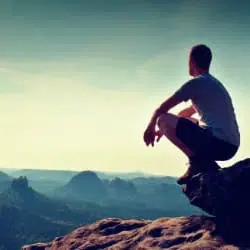
This article will help you find the perfect running shoes, no matter if you’re a beginner or an expert runner.
Invest in quality
Buying cheap running shoes can be a waste of money. “Usually, cheap shoes provide poor performance and foot stability.
You should buy reputable brands that are made for purpose to get the best results.
Know when you should get replacement shoes.
Your running shoes should last for at least 640-800 km before they need to be replaced. If you feel pain in your joints after long runs, it could indicate that they have worn out. You can also track their lifespan by using various apps like Strava, Nike + Run Club and MapMyRun.
To test a good shoe, grab the sole of the shoe. If it bends and doesn’t return back to its original position, the shoe is most likely to fail.
Comfort is the most important thing
“So far, all studies seem to support the idea that the most comfortable shoe will be the one you are most comfortable with,” Anthony Fletcher (Biomechanics Trainer) and Leader of Equinox ‘Precision Running” Class. It seems that anatomically, the more comfortable a shoe is, the better it performs.
Running shoes are controversial. There have been many debates about which type of shoe should be adapted for overpronation and underpronation. Although there are some general guidelines you can follow, each foot is unique so it is better to not use them as a guide. If in doubt, consult a local running shop who is knowledgeable about the subject. There are many 3D foot scans available.
Barefoot sneakers for minimalists
Motus Vivobarefoot Runner shoes typically have a drop between the heel and toe cushioning of at least 8mm. However, barefoot shoes can reduce this drop to zero. This allows you to run more naturally by hitting the ground with your soles rather than your heel.
Christopher McDougall, a journalist, promoted the cult of barefoot-running in his book Born To Run. The cult has enjoyed a great following since then, though it did suffer a setback when a shoe company that sold barefoot shoes had to pay a lot of money for misleading advertising. Emma recommends that runners with weak joints such as seniors, should not run barefoot. However, she says the technique can help strengthen the foot. Running barefoot is not a running technique, but a way to strengthen your feet.
Toren points out that there is not enough evidence to support its benefits.
Anthony is skeptical too. He says that the biggest problem with barefoot shoes is that they are not allowed to be worn on asphalt. The risk of injury is reduced if you can run on the beach, grass, or on wet ground. However, running on asphalt with minimalist footwear or barefoot can pose a problem for runners, especially if the shoe does not adapt to the terrain.
The MV by Newton and Motus By Vivobarefoot are two examples of minimalist quality footwear.
Shoes that move freely
Anthony says that the reason for the rise in flexible footwear is because it allows the foot to move as it pleases. The pronation in the tread, which absorbs impact and slides, was once regarded as a disease. But the truth is that pronation is an essential part the foot. It is not natural to try and prevent it happening.
The rule of thumb is that shoes should be more flexible to allow for movement if the foot is stiffer. To create stability, the shoe must be more flexible than the foot.
Nike FlyKnit is a great example of a shoe that allow for free movement.
Low drop
12mm is the height difference between the heel of the toe and the heel when Emma started her career in the industry 8 or 9 years ago.
For speed and track training, a low drop is best as the transition from heel-toe is quick. This allows for quick and jerky movements.
For runners with Achilles or calf issues, low-drop footwear may not be the best choice. Tension runs through the foot as the heel touches the ground.
Drops of high magnitude
There are some traditional brands that stick to the 12mm drop. Brooks and Asics are about 10-12mm.”
Neutral slippers
Neutral shoes are meant to align the foot and focus on the pronation.
A Saucony shoe is called Ride. It has an 8mm drop in heel-to-toe distance. From a biomechanical standpoint, it performs very well. Even though there may be a slight overpronation, he controls his foot well.
“Another model is the Wave Rider by Mizuno. This is Mizuno’s most innovative shoe, and it has been in the market for over 20 years. Although it has a drop of 10mm, this shoe is very light and comfortable.
Stability shoes
Toren speculates that today’s runners are able to continue running into the future because of new stability and support technologies in running shoes. This is a change from previous generations.
There are many good models available on the market. Emma says that Asics’ 2000 model has the best angle of support. “Hoka brand shoes feature a maximum curvature sole design, which emphasizes the transition from the forefoot to the shoot a little more.”
Clifton 3 Hoka, the final batch of the award-winning range Clifton is manufactured using Speed Instinct Pro2Lite technology. It features soft heel cushioning as well as a firm and sensitive forefoot.
“This is what Adidas Boost material attempts to do, bring sensitivity the toe.”
Stability in footwear is not the answer for all feet. Flat feet may believe that increasing the support of footwear can solve their joint pain. However, this is not true. A neutral shoe that can stabilize the foot is often what is needed.
Follow your style
You should wear the shoe that suits you best when you’ve chosen it.
Anthony says, “Many runners practice the forefoot or toe style of Chi Running, but the problem with that is that not all styles work for everyone.”
The same principle applies to running shoes, but it can also be applied to running in general. Choose what’s most comfortable. This sounds like good advice, and it is the best way for you to maintain your health and fitness over the long-term.
ABOUT

Hey, Mark Ladd here. I am a sports fanatic and have a passion for this. Particularly running is what I love best. However, around 5 years ago I had an accident that changed my life. I can no longer pursue those sporting activities, so I moved my focus on a different approach where I blog about the sports and other areas of life which I have grown to appreciate more since my accident.
Click to read on

